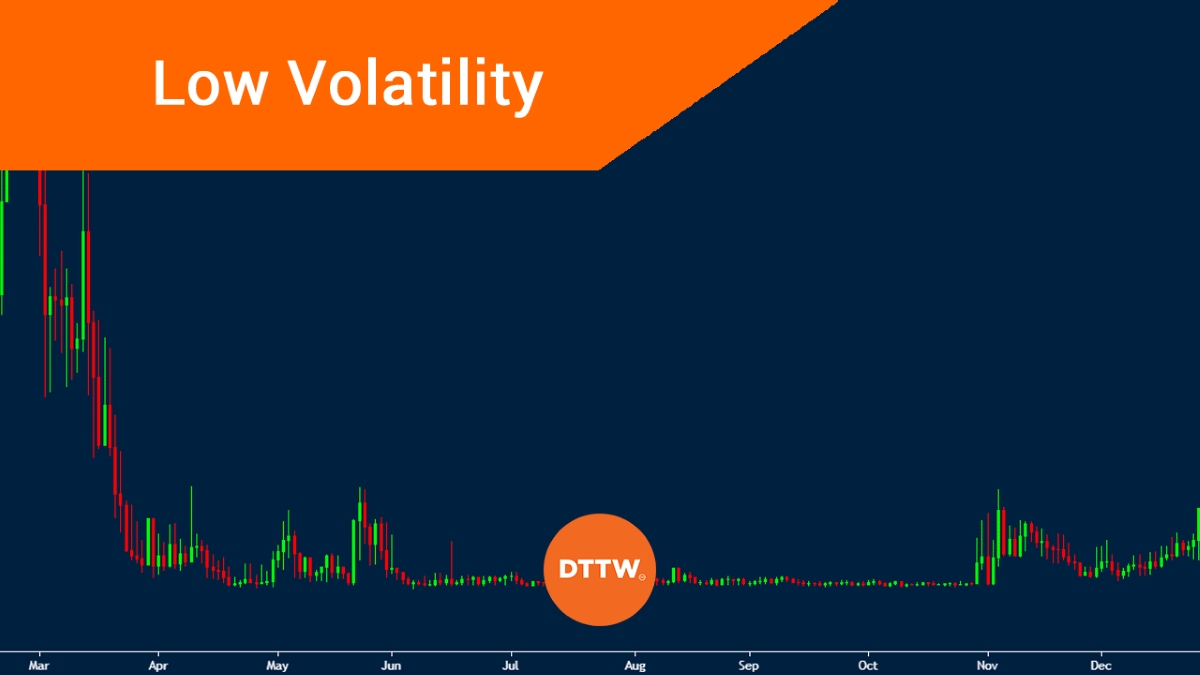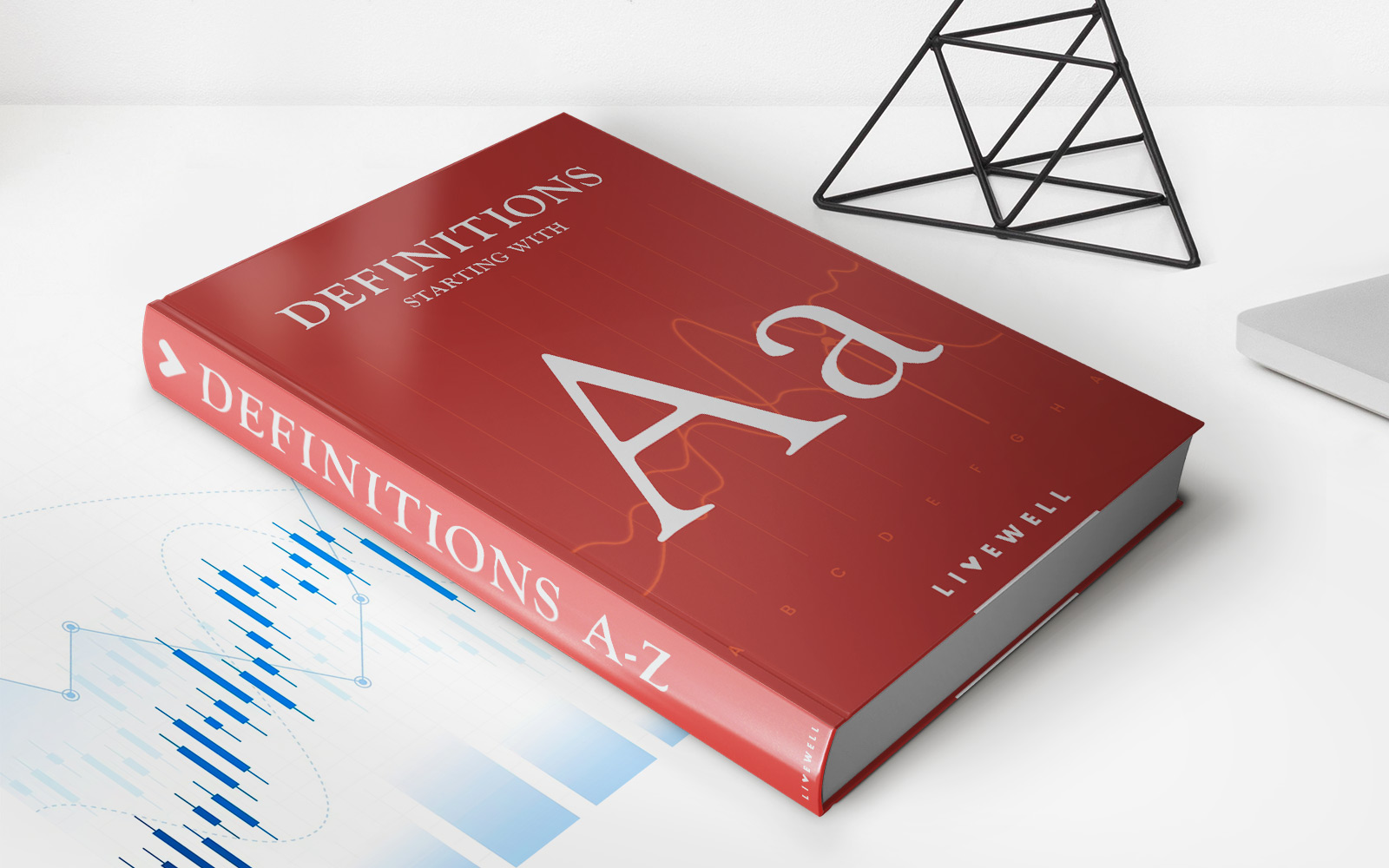Home>Finance>Which Savings Account Will Give You The Lowest Return?


Finance
Which Savings Account Will Give You The Lowest Return?
Modified: December 30, 2023
Discover which savings account in finance will provide you with the lowest return and make an informed decision about your financial future.
(Many of the links in this article redirect to a specific reviewed product. Your purchase of these products through affiliate links helps to generate commission for LiveWell, at no extra cost. Learn more)
Table of Contents
Introduction
When it comes to saving money, many individuals rely on traditional savings accounts as a way to store their funds. However, not all savings accounts are created equal in terms of the returns they offer. In fact, some savings accounts may provide disappointingly low returns, while others offer higher rates of interest or additional benefits.
In this article, we will explore the different types of savings accounts and examine which ones are more likely to provide you with the lowest return on your investment. It is important to note that the returns on savings accounts are influenced by several factors such as interest rates, fees, and account features. By understanding these factors, you can make an informed decision when choosing a savings account that best suits your financial goals and needs.
It’s worth mentioning that while this article focuses on savings account returns, the primary purpose of a savings account is to provide a safe and accessible place to store your money. Saving is an essential part of building a strong financial foundation, and even if the returns may be low, having a savings account is still a wise decision to ensure the security of your funds.
Now, let’s dive into the various factors that can impact the returns of different types of savings accounts and explore which accounts are more likely to provide the lowest return on your savings.
Factors Affecting Savings Account Returns
Several key factors can influence the returns you earn on your savings account. It’s important to understand these factors and how they can impact your overall return on investment:
- Interest Rates: The interest rate is one of the primary factors affecting the returns on your savings account. The higher the interest rate, the more you’ll earn on your savings. Different banks and financial institutions offer varying interest rates, so it’s essential to compare rates when choosing a savings account. Some accounts may have variable interest rates that can fluctuate over time, so keep this in mind when making your decision.
- Compounding Frequency: Compounding refers to the process where the interest you earn on your savings is added to your principal balance, and future interest is calculated based on this new balance. The more frequent the compounding, the faster your savings will grow. Look for accounts that offer daily or monthly compounding to maximize your returns.
- Fees: Some savings accounts come with fees that can eat into your overall return. Common fees include monthly maintenance fees, ATM fees, and overdraft fees. Be sure to read the account terms carefully and choose an account with minimal fees to help preserve your returns.
- Minimum Balance Requirements: Some savings accounts require a minimum balance to be maintained to avoid monthly fees or to earn a higher interest rate. If you dip below the minimum balance, you may face penalties or receive a lower interest rate. Consider your financial situation and ensure that you can comfortably meet the minimum balance requirements before opening an account.
- Account Features: Different savings accounts may come with additional features that can impact your overall return. For example, certain accounts may offer rewards or bonuses for meeting specific criteria, such as making regular deposits or maintaining a certain balance. These features can enhance your returns and should be taken into account when comparing savings account options.
By considering these factors, you can make an informed decision when selecting a savings account that aligns with your financial goals. Now, let’s explore the different types of savings accounts and see which ones are more likely to offer the lowest return on your investment.
High-Yield Savings Accounts
High-yield savings accounts, also known as high-interest savings accounts, often offer higher interest rates compared to traditional savings accounts. These accounts are typically offered by online banks or credit unions and are designed to attract savers who want to maximize their returns.
With a high-yield savings account, you can potentially earn a higher return on your savings due to the higher interest rates offered by these accounts. These rates are typically variable and can vary from one institution to another. It’s important to keep in mind that while high-yield savings accounts offer a higher return compared to traditional savings accounts, they still may not provide the highest returns when compared to other investment options like stocks or mutual funds.
Unlike traditional savings accounts, high-yield savings accounts often have minimal fees and may waive monthly maintenance fees altogether. This can help you save more of your earnings and increase your overall return. However, it is important to carefully review the terms and conditions of any high-yield savings account to ensure that you are aware of any potential fees or limitations.
One potential downside of high-yield savings accounts is that they may require a higher minimum balance to open and maintain the account. Additionally, some accounts may have a limit on the number of withdrawals you can make each month. These restrictions are designed to encourage long-term savings behavior and maintain the stability of the institution. If you anticipate needing frequent access to your funds, you may want to consider these factors when deciding if a high-yield savings account is right for you.
Despite these limitations, high-yield savings accounts offer a viable option for individuals looking to earn a higher return on their savings compared to traditional savings accounts. By leveraging the higher interest rates and minimal fees associated with these accounts, you can potentially grow your savings faster. However, it’s important to compare rates, fees, and account features across various banks and institutions to ensure that you are selecting the best high-yield savings account for your financial goals.
Traditional Savings Accounts
Traditional savings accounts are the most common and widely available type of savings account offered by banks and financial institutions. These accounts generally offer lower interest rates compared to high-yield savings accounts, making them a more conservative option for savers.
One of the main advantages of traditional savings accounts is their accessibility and ease of use. They are typically offered by brick-and-mortar banks and can be easily opened and managed in person or online. This makes traditional savings accounts a convenient option for individuals who prefer a more traditional banking experience.
While traditional savings accounts may offer lower interest rates, they often come with lower or no minimum balance requirements and fewer limitations on withdrawals. This adds to their appeal for those who value ease of access and flexibility. However, it’s important to note that some traditional savings accounts may still have fees associated with them, such as monthly maintenance fees, so it is crucial to read the terms and conditions before opening an account.
Traditional savings accounts are generally considered low-risk, as they are insured by the Federal Deposit Insurance Corporation (FDIC) in the United States, up to the specified limits. This means that even if the bank were to fail, your funds would still be protected. This level of security makes traditional savings accounts an attractive option for individuals who prioritize the safety of their savings over higher returns.
While traditional savings accounts may not offer the highest returns compared to other investment options, they serve as a reliable and accessible tool for saving money. They are ideal for short-term financial goals, emergency funds, or for individuals who prefer a conservative approach to managing their savings. It’s important to consider your overall financial goals and risk tolerance when deciding if a traditional savings account is the right choice for you.
Money Market Accounts
Money market accounts are a hybrid savings and investment product offered by banks and credit unions. They often offer higher interest rates compared to traditional savings accounts but may require a higher minimum balance to open and maintain.
Money market accounts are similar to savings accounts in that they provide a safe place to deposit funds while also offering the potential for higher returns. These accounts typically invest the deposited funds in low-risk, short-term debt securities, such as Treasury bills or commercial paper. The interest earned on these investments is then passed on to the account holders.
One of the main advantages of money market accounts is their ability to provide slightly higher interest rates compared to traditional savings accounts. However, it is crucial to note that money market account rates can still be lower than those offered by high-yield savings accounts or other investment options.
Money market accounts also offer a higher level of liquidity compared to other investment vehicles, such as certificates of deposit (CDs). While money market accounts may have limitations on the number of withdrawals or checks you can write per month, they still offer more accessibility than some long-term investment options.
Another benefit of money market accounts is the potential for check-writing privileges. This allows you to pay for expenses directly from your account, making it more flexible for everyday transactions.
However, money market accounts may come with fees, such as monthly maintenance fees or excessive withdrawal fees, if you exceed the allowed limit. These fees can eat into your overall return, so it is important to review the account terms and conditions before opening an account.
Money market accounts are a suitable option for individuals who want a balance between higher interest rates and easy access to their funds. They provide a middle ground between traditional savings accounts and other types of investments, offering slightly higher returns while maintaining a conservative approach to saving. Consider your financial goals and balance them against the potential fees and restrictions associated with money market accounts to determine if they are the right choice for you.
Certificates of Deposit (CDs)
Certificates of Deposit, commonly known as CDs, are a type of savings account that offer fixed interest rates and specific maturity periods. They are considered a low-risk investment option that guarantees a return on your savings.
When you open a CD, you agree to leave your money in the account for a fixed period of time, known as the maturity period, which can range from a few months to several years. During this time, your funds accrue interest at a predetermined rate, which is typically higher than what you would earn with a traditional savings account.
CDs are appealing to individuals who have a specific financial goal and don’t need immediate access to their funds. These accounts are suitable for long-term savings goals, such as saving for a down payment on a house or funding a child’s college education.
One of the primary advantages of CDs is their predictability and security. Since the interest rate is fixed, you know exactly how much you will earn over the course of the CD’s term. Additionally, CDs are typically insured by the Federal Deposit Insurance Corporation (FDIC), providing an extra layer of protection for your savings.
However, CDs do have some drawbacks. One limitation is the lack of liquidity. Once you deposit your funds into a CD, withdrawing them before the maturity date can result in penalties or loss of any accrued interest. This makes CDs less suitable for emergency savings or funds that may need to be accessed in the near term.
Another factor to consider is the opportunity cost. While CDs offer a secure way to grow your savings, the returns may be lower compared to other investment options like stocks or mutual funds. If you are comfortable with taking on more risk, you may find that other investment opportunities offer higher potential returns.
To maximize the returns on a CD, it is important to shop around and compare rates from different banks and financial institutions. Look for CDs with competitive interest rates and terms that align with your financial goals and timeframe.
Certificates of Deposit are a conservative savings option that can provide a guaranteed return on your investment. They are suitable for individuals with a specific savings goal and longer-term timeframe. By carefully considering the maturity period, interest rate, and other factors, you can choose a CD that meets your financial needs while balancing the potential for higher returns and liquidity constraints.
Checking Accounts
Checking accounts are a type of deposit account that allows for frequent and convenient access to your funds. While they are primarily used for everyday transactions such as paying bills and making purchases, some checking accounts offer limited interest on the balance.
Compared to other types of savings accounts, checking accounts typically offer lower interest rates or no interest at all. The focus of a checking account is to provide easy accessibility to your funds rather than generating significant returns.
Checking accounts come with a range of features that make managing your day-to-day finances convenient. These features may include a debit card for ATM and point-of-sale transactions, check-writing capabilities, and access to online and mobile banking services.
One significant advantage of checking accounts is the flexibility and liquidity they offer. You can deposit and withdraw funds as needed without restrictions or penalties. This makes checking accounts ideal for individuals who prioritize instant access to their money for everyday expenses and emergencies.
It’s important to note that some checking accounts may have monthly maintenance fees or minimum balance requirements. These fees and requirements can vary depending on the bank or financial institution. To minimize fees, consider choosing a checking account that aligns with your banking needs and offers fee waivers for meeting certain criteria, such as maintaining a minimum balance or receiving direct deposits.
While checking accounts may not provide significant interest earnings, they serve an essential purpose in managing daily financial transactions and ensuring easy access to your funds. They are a core component of personal finance and work in tandem with savings accounts and other investment options to create a well-rounded financial management strategy.
Overall, checking accounts are a convenient tool for managing your day-to-day finances and providing easy access to your money. If earning interest is not your primary goal and you value the convenience and flexibility of accessing your funds, a checking account is an essential financial tool to consider.
Conclusion
Choosing the right savings account is an important decision that can have a significant impact on the returns you earn on your hard-earned money. While traditional savings accounts provide a safe place to store your funds, they may not offer the highest returns compared to other options available.
High-yield savings accounts, on the other hand, typically offer higher interest rates and minimal fees, making them a more attractive choice for individuals seeking higher returns on their savings. However, these accounts may require higher minimum balances and have limitations on withdrawals.
Money market accounts provide a balance between higher interest rates and accessibility, making them suitable for those who want to earn slightly higher returns while maintaining easy access to their funds.
Certificates of Deposit (CDs) offer a fixed interest rate and a predetermined maturity period, making them a reliable option for individuals with long-term savings goals. However, CDs may lack liquidity and potentially limit your access to funds.
Checking accounts, while not offering significant interest earnings, provide the utmost liquidity and convenience for day-to-day financial transactions. They serve as a vital component of personal finance, ensuring easy access to funds for immediate expenses and emergencies.
It’s essential to consider your financial goals, risk tolerance, and liquidity needs when choosing a savings account. Evaluate interest rates, fees, and account features to identify the account type that best aligns with your needs.
Ultimately, no savings account will provide the highest possible returns compared to more aggressive investment options like stocks or mutual funds. However, savings accounts provide stability, security, and ease of access to your money, making them a crucial tool in building and maintaining your financial foundation.
Remember, the primary purpose of a savings account is to safeguard your money and build a foundation for future financial growth. By understanding the factors that impact savings account returns and choosing the right account for your needs, you can make the most of your savings and work towards achieving your financial goals.














